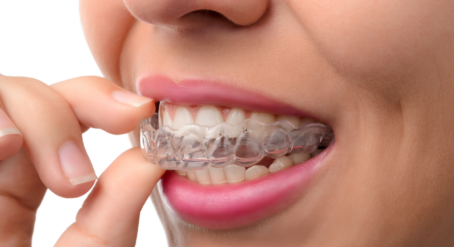If you’re about to get braces, or are in the midst of treatment, it can help to know what you’re in for. This article takes you through the three key stages of braces treatment and what to expect.
The planning stage
The first stage of braces treatment is to figure out where your teeth need to move to and how to align your bite. This is normally done via using a combination of technology, such as X-rays or scans and photos, as well as an examination by your orthodontist.
You’ll then decide which type of braces are best for you, together with your orthodontist.
The main types include:
- Metal braces: Consists of metal brackets attached to the teeth that are connected by a thin metal wire that is adjusted regularly, putting pressure on the teeth.
- Ceramic braces: Similar to metal braces but made from clear or tooth-coloured wires.
- Lingual braces: Braces that are placed at the back or on the inside of the teeth.
Clear aligner treatment, such as Invisalign®, Spark® or 3M Clarity, is also a form of braces treatment – but there’s more on that here.
The active stage
This is where your teeth start to move as a result of the gentle pressure of your braces. You might feel a bit of pain, tenderness or discomfort during this stage – but it will pass.
Once your teeth are in position your orthodontist will also start to correct your bite and may add things like elastics or springs to your braces to help with this process. This helps ensure the upper and lower dental arches are aligned and that your teeth bite together harmoniously.
The retention stage
Making it to the final stage of your braces treatment is an exciting milestone.
But although your braces may be off, there’s still important maintenance work to be done. A key part of looking after your teeth post-treatment is to wear retainers to help keep your teeth in their corrected positions. There are two different types of retainers: fixed retainers and removable retainers. Fixed retainers are usually made from a thin wire that is bonded behind the upper or lower front teeth. Removable retainers are typically made from plastic or metal and are usually worn every night. Your orthodontist will advise you on which retainers are best suited for your individual case, how many hours a day to wear them (if they are removable), and how to clean and look after them.
You’ll also have to have regular check-ups for at least 12 months after your braces come off.
How long does the last stage of braces take?
There’s no set timeframe for braces treatment – or for how long each stage will take. This should be determined by your orthodontist and can be affected by:
- The needs of your teeth (and how crooked they are)
- How your bite is aligned
- How well you care for your braces
- The type of braces you have
But as a general estimate, treatment typically takes between 6 months and two years.
However, in the last phase of your treatment (retention), it is generally recommended that you wear your retainers as long as possible. Your teeth will naturally continue to shift over time and wearing your retainer is the best thing you can do to preserve your new smile for years to come.
Ready to get started with phase one of braces treatment? Find a specialist orthodontist near you and make an appointment now.









